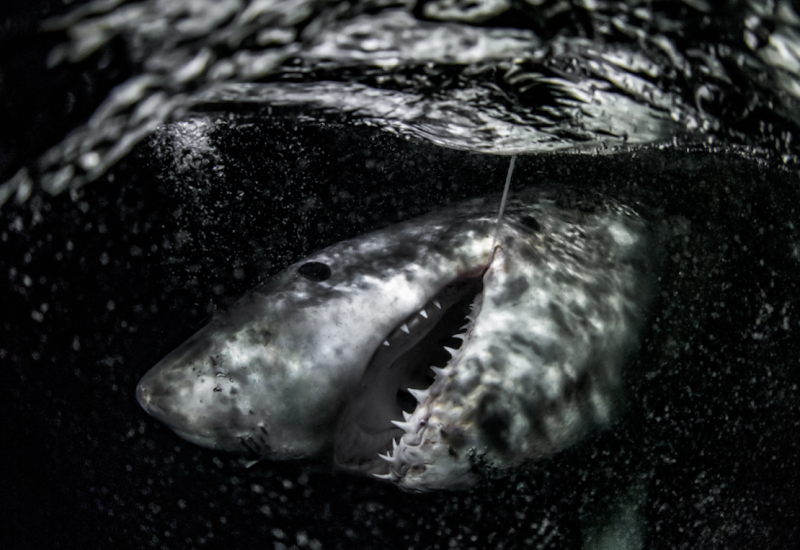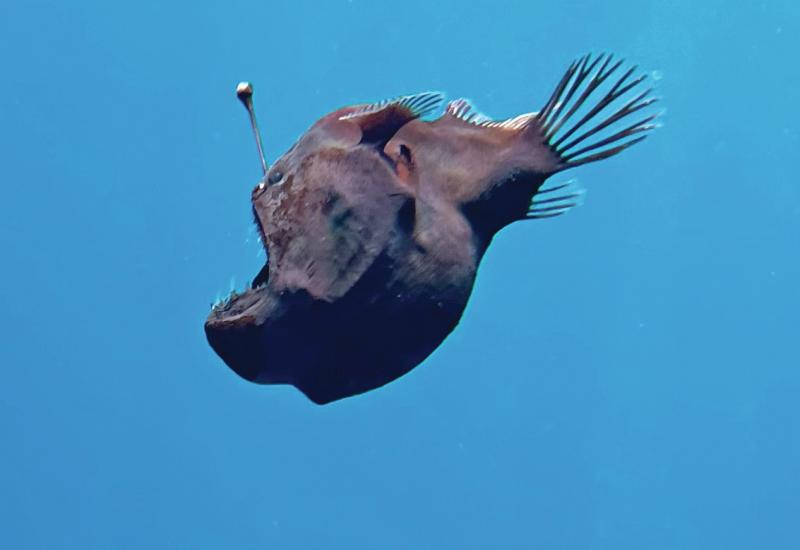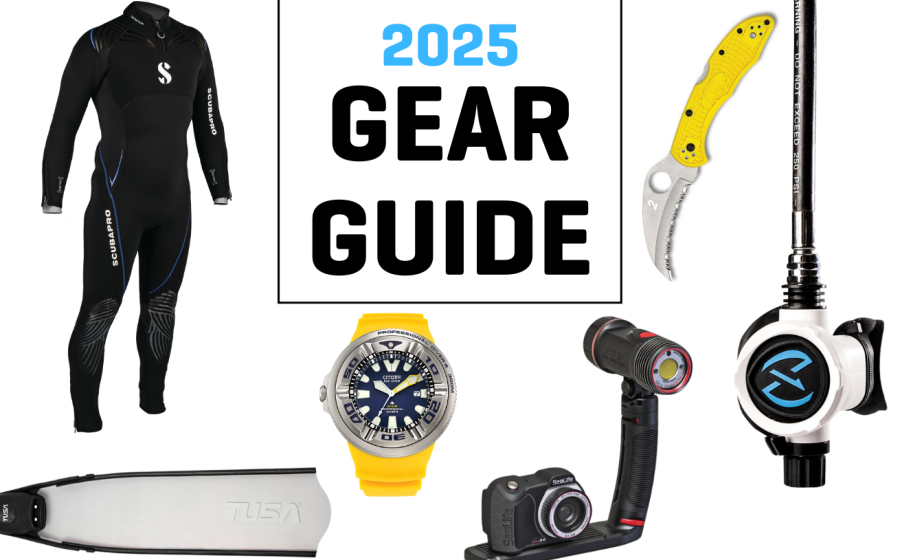Underwater Photography Tips: How to Take the Best Photos of Sea Animal Behavior
Understanding animal behavior is a challenge in underwater photography and arming yourself with as much knowledge can help to achieve the most gratifying of images. Did you ever notice how some shooters always seem to be in the right place all of the time? Reading between the lines will help you to discover how this happens and to make it happen for you. Here are the stories behind some of my favorite images and the critters that made them beautiful.
Want to learn more? Read Mike's 5 Ways To Get To Know Your Subject.

Mike BartickWunderpus Octopus
Photo setting: F/18 @ 1/160th, 105mm lens
The wunderpus is one of my favorite octopuses to photograph because it's so industrious. They become very active in the afternoon when they come out to feed scooting along the bottom, probing small holes with their arms looking for a snack. Shrimp and shellfish, like clams, are the staples in a Wunderpusses diet. Webbing over their prey and trapping them is quite common in most octopus.
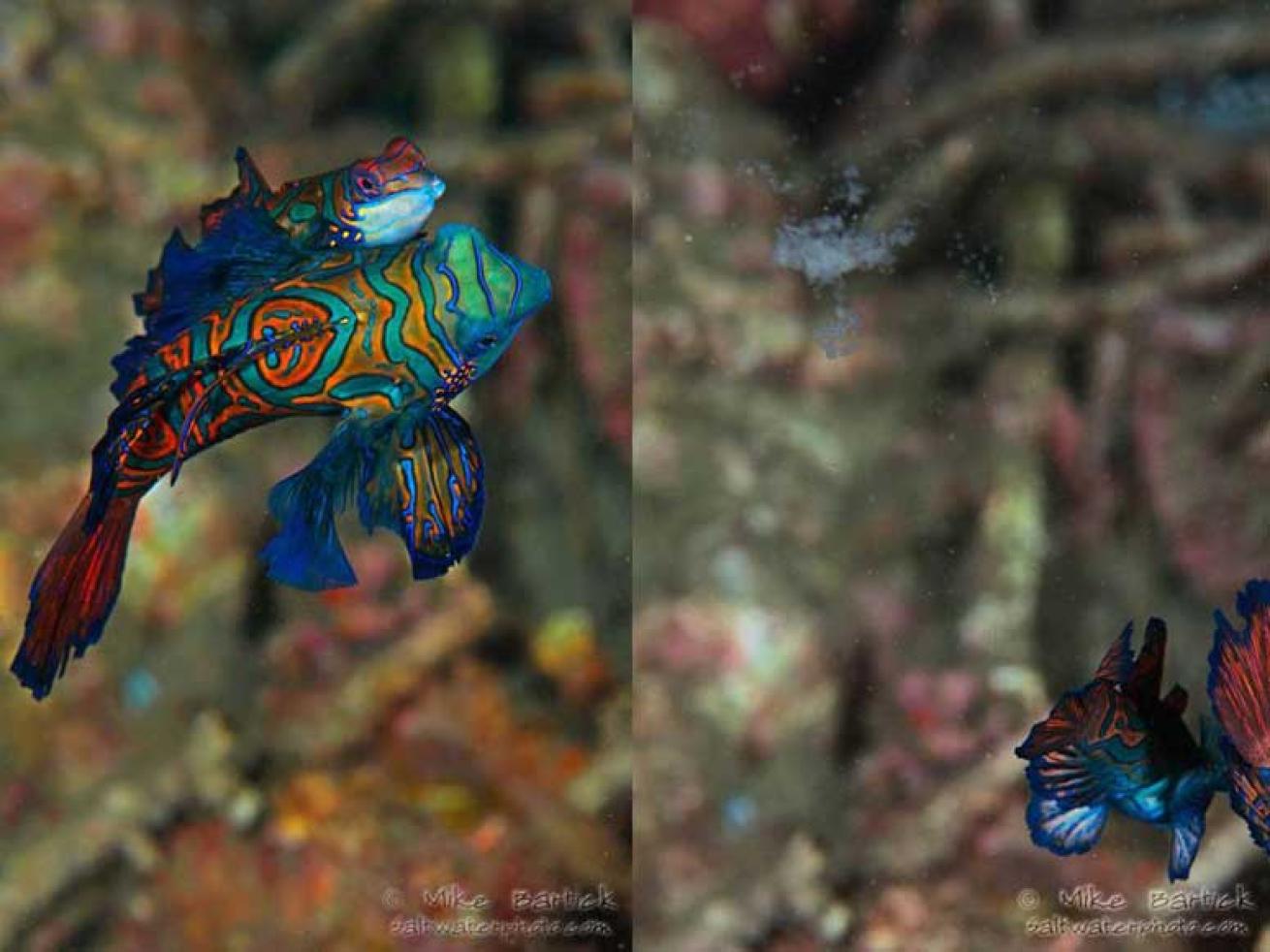
Mike BartickMandarin Dragonet
Photo setting: F11 @ 1/100 ISO 400,105mm lens, 3 frames per second, strobes low power
Mandarin dragonets (Synchiropus splendidus) are a peculiar but lovely fish to photograph. Each evening as the sun dips into the horizon these colorful dragonets emerge from their dens amongst the hard corals and begin the search for a mate._ The female which is generally larger than the male will attempt to mate and spawn as many times as possible each night, during the sunset. Once a suitor has been identified they will both rise vertically together, above the coral. Unpredictably and in a flash they spawn and vanish!
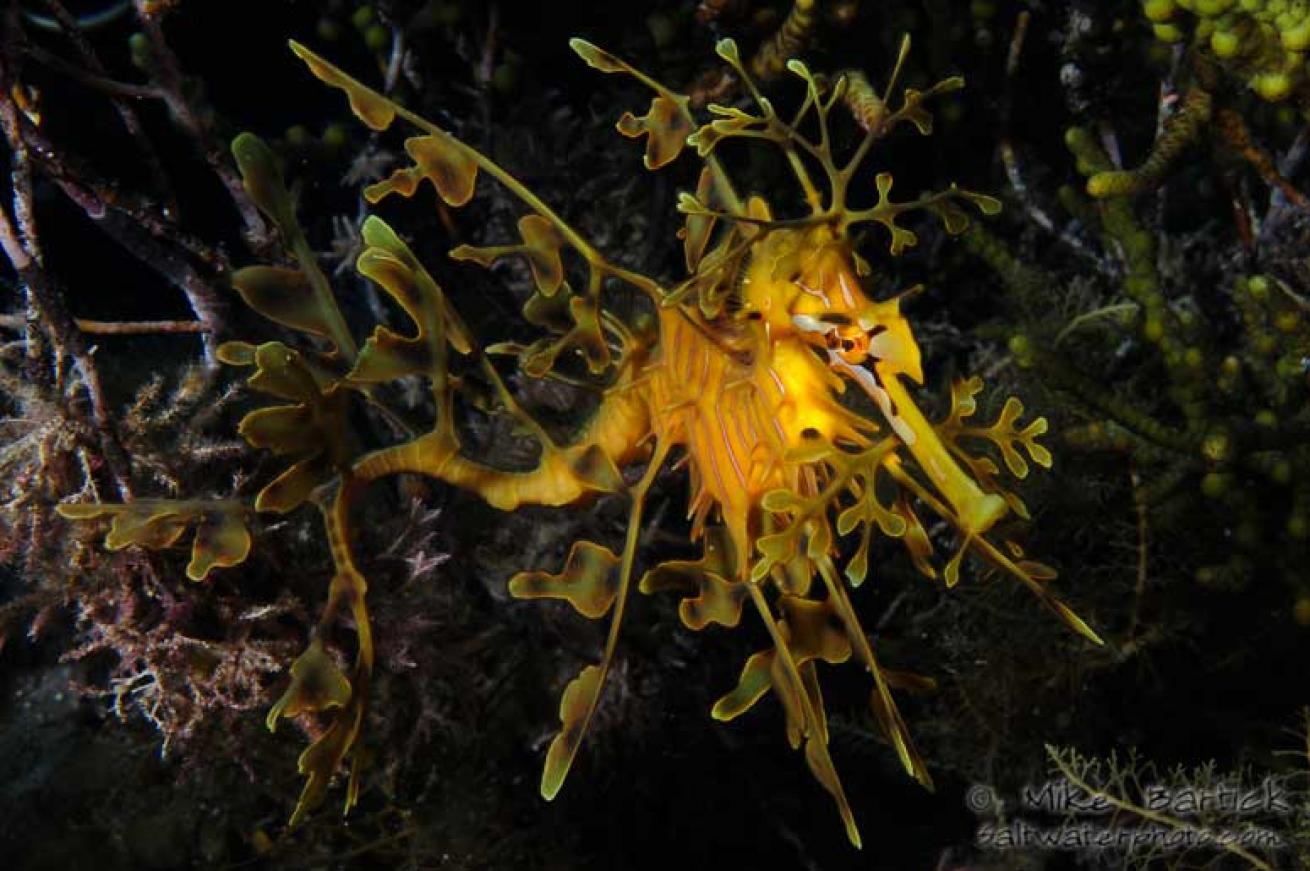
Mike BartickLeafy Sea Dragons
Photo setting: F18 @ 1/100, 40mm macro
Leafy Sea Dragons (Phycodurus eques) are certainly one of the most intriguing critters on the planet; they are very habitat specific and found in a narrow range of South Australia. These whimsical and fairytale like creatures casted their spell on me the first time I saw one during a husbandry tour at an aquarium in the U.S. I just couldn’t believe that something this incredible exists in our oceans. I selected the unusual 40mm macro lens to photograph the Leafys as I knew it would allow me to capture a wider angle of view retain detail and gain depth of field. My buddy Alex actually suggested the lens as we discussed the different possibilities on how to approach a mid-sized macro critter.

Mike BartickRed Dragon Shrimp
Photo Setting: F18 @ 1/125, 105mm and + 10 Diopter
The hunt for the green dragon shrimp ended abruptly when I found a red one. I searched for several years trying to locate the correct corals to find them on, then on a whim I decided to check something different and bingo!, Red Dragon Shrimp (Miropandalus hardingi).
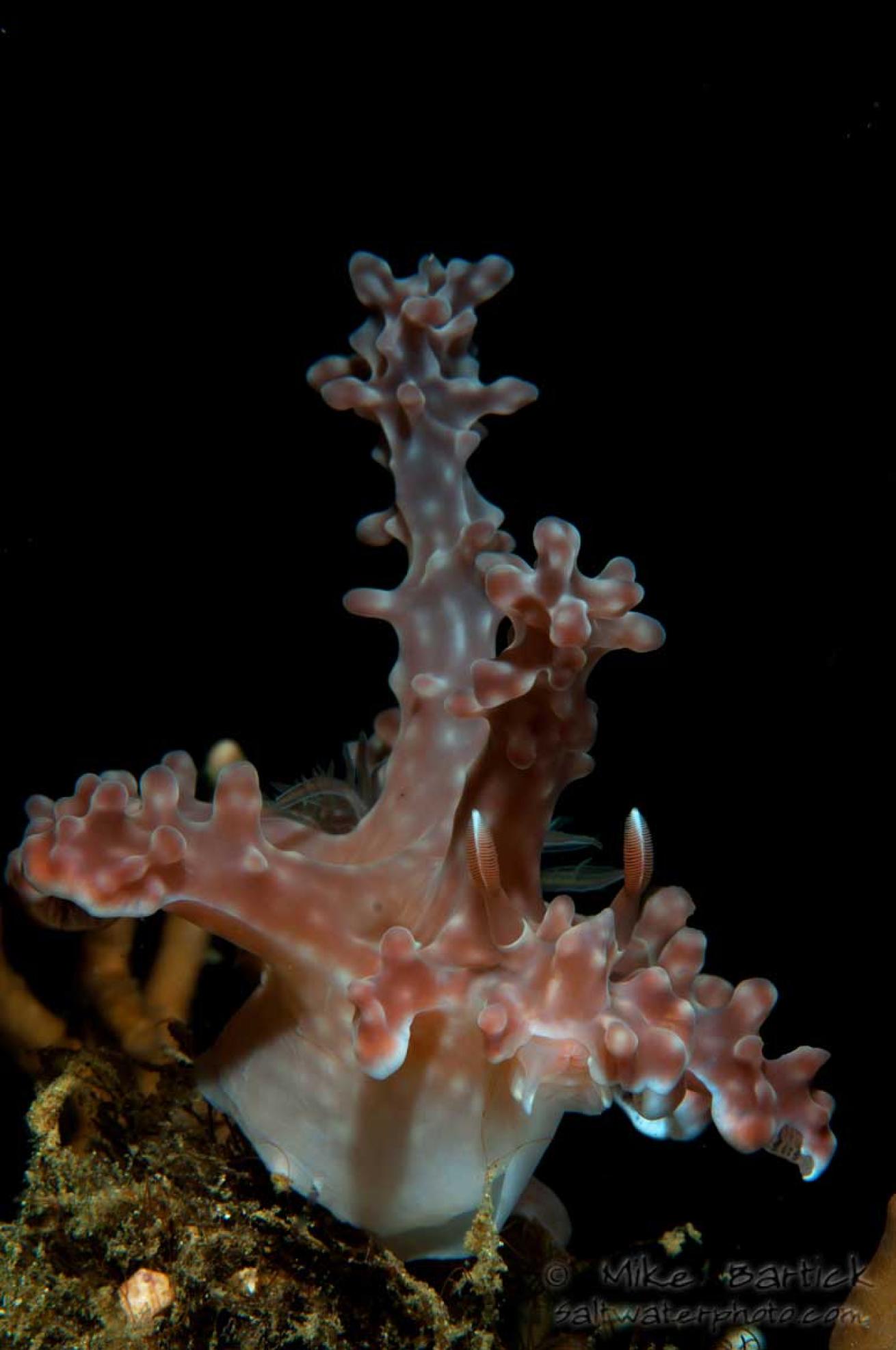
Mike BartickCeratasoma Alleni
Photo Setting: F/20 @ 1/160th, Sigma 28-80 zoom macro
As far as Nudibranchs are concerned the Ceratasoma alleni can turn any so-so dive into an unforgettable experience very quickly. The Alleni closely resembles hard corals and with its tall, odd shaped Cerata they are easily missed while on the reef. The first alleni was originally discovered off the island of Mindanao, Philippines, the second specimen of this species was collected in Anilao several years later and eventually described.
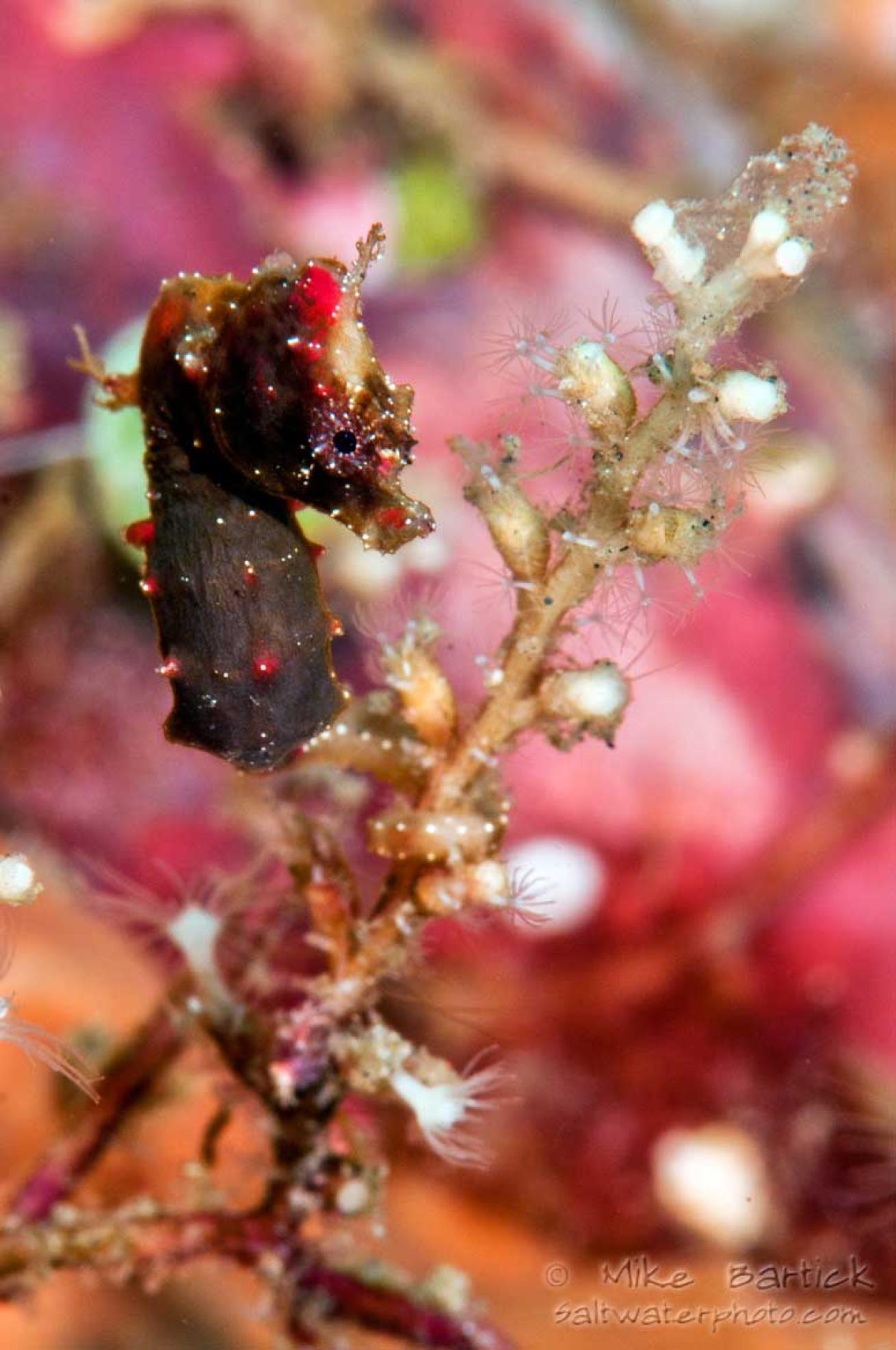
Mike BartickPygmy Seahorse
Photo Setting: F/22 @ 1/100, 105mm with +5 diopter
Seahorses can be a bit frustrating to photograph well as they tend to turn away from modeling lights, look down or just lay there. Unlike other seahorses the pygmy seahorse severensi is one of the smallest of the pygmys overall measuring at 1.5 mm in height and a laterally compressed body as thin as a hair. This particular sea horse was a sweet chocolate color which helped it to stand out well against the bright pinks in the background. The Hippocampus severnsi prefer surgey areas living in the shallows, under coral heads and cracks, which also adds to the difficulty in photographing them.
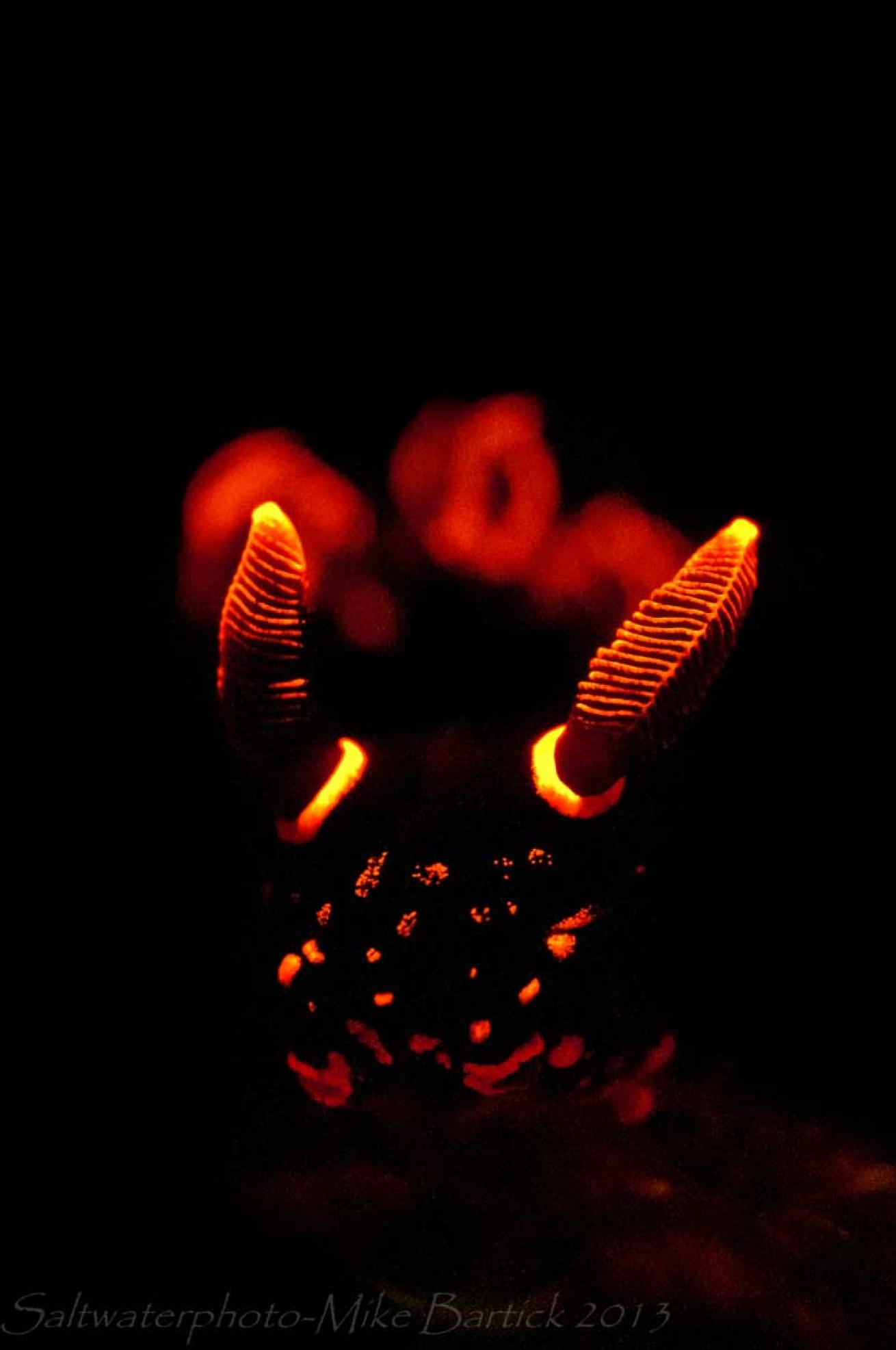
Mike BartickGreen-lined Nembrotha nudibranchs
Photo Setting: F/6.3 @ 1/100, ISO 2500, 60mm lens and interruption filters
To my surprise these common Green-lined Nembrotha nudibranchs glow like fireflies when illuminated with the nightsea blue light as night dives take on a new dimension when using this Light for Fluoro photography. I've heard others regard the experience like finning through a blacklight poster which is fairly accurate. Shooting photos can be a bit tricky without a strobe and tend to be soft at first. Any style of camera will yield great and unusual photos using this style of photography.
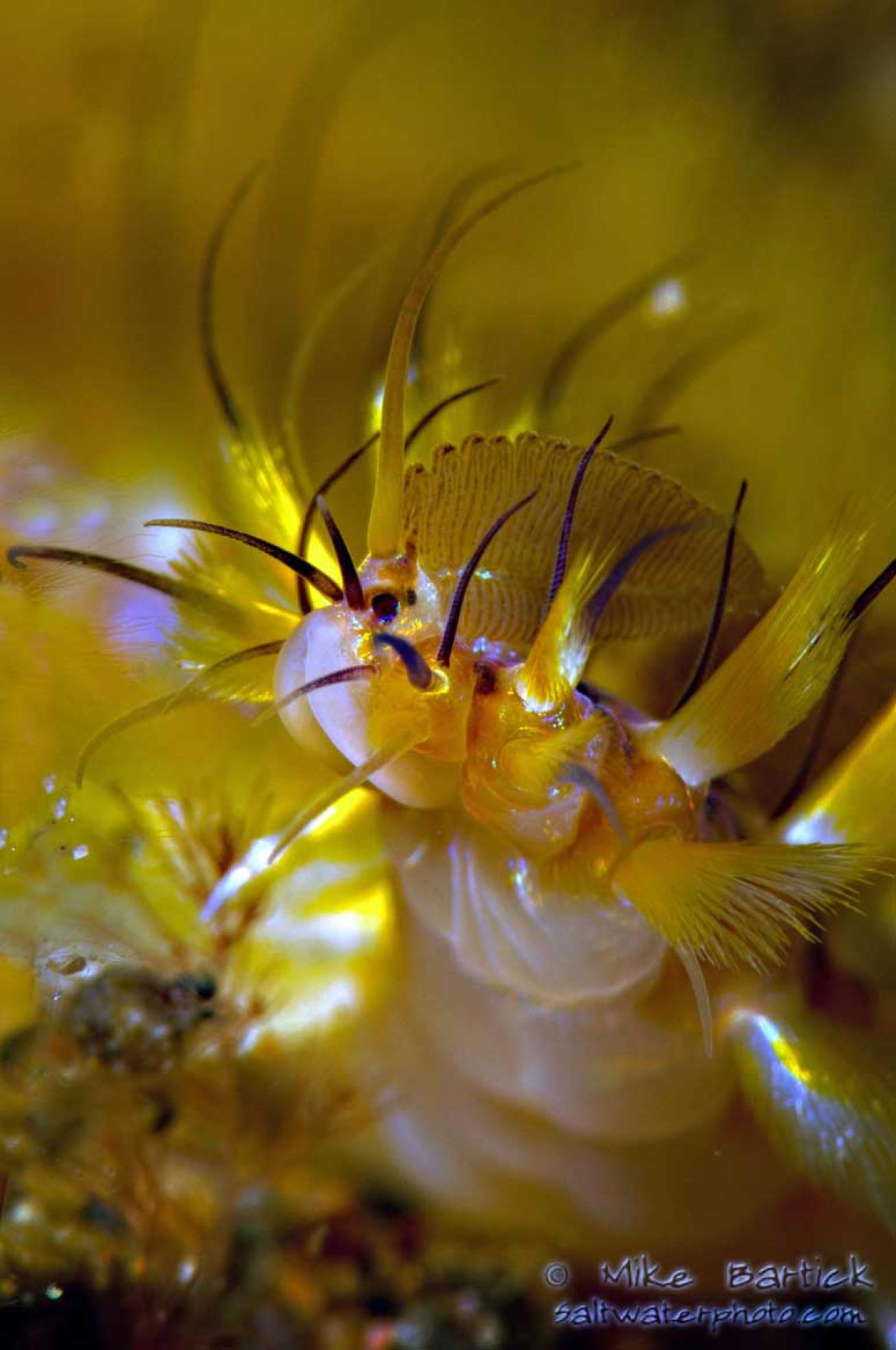
Mike BartickYellow Fire Worm
Photo Setting: F 25 @ 1/125, 105mm lens with a +5 diopter
Yellow Fire Worm (Chloeia fusca) are a common find on night dives through-out the indo-pacific. It's speculated that they sting or burn when touched but I have not had the pleasure of investigating this urban rumor quite yet. The use of a 5X diopter decreases the depth of field and shortens the working distance of longer macro lenses allowing for tight macro work and buttery bokeh in the background.
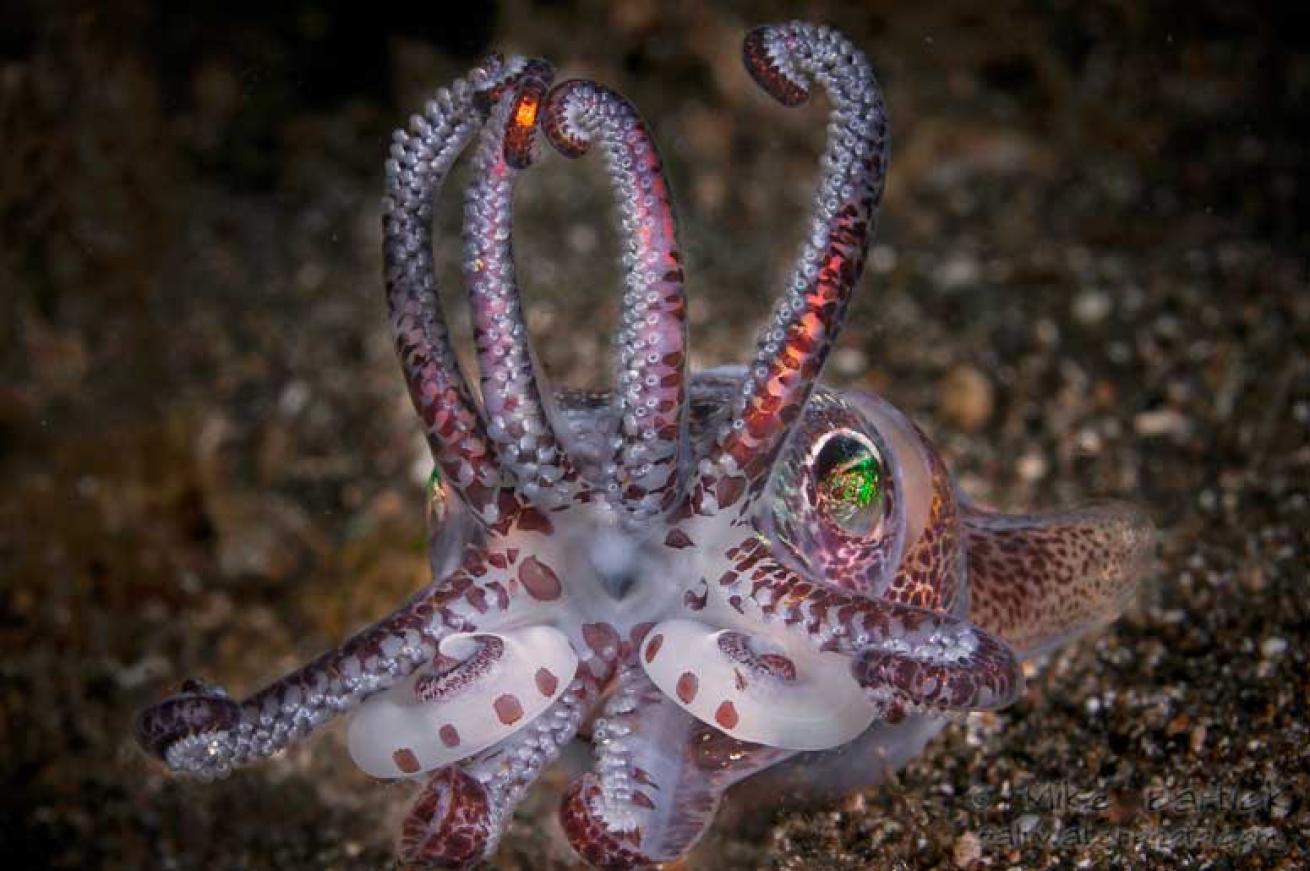
Mike BartickBobtail Squid
Photo Setting: F/18 @ 1/250, 60 mm lens
These nocturnal cephalopods are sand dwelling little cuties that are sometimes referred to as dumpling squids but the reality of it is that they are more closely related to a cuttlefish. The Bobtailed squid has no cuttlebone though which makes it less buoyant and confining their habitat to the sandy substrate instead of roaming the blue. Bobtailed squid host a symbiotic algae Vibrio Fischeri, a bioluminescent algae which inhabits the squid under its mantle. This algae produces light at various wavelengths and helps the bobtailed squid to hunt and to hide.


